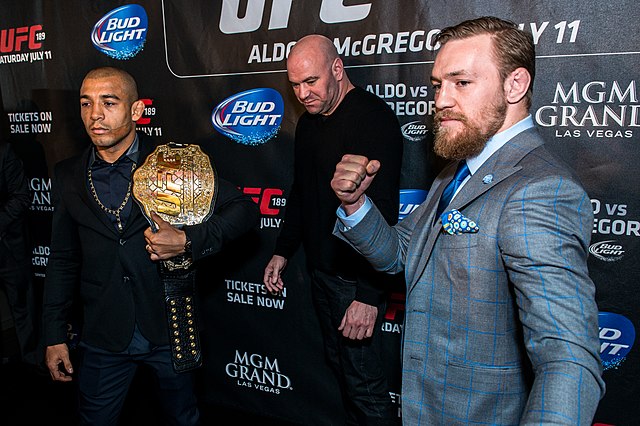Pankration was an unarmed combat sport introduced into the Greek Olympic Games in 648 BC. The athletes used boxing and wrestling techniques but also others, such as kicking, holds, joint-locks, and chokes on the ground, making it similar to modern mixed martial arts. The term comes from the Greek παγκράτιον, meaning 'all of power', from πᾶν (pan) 'all' and κράτος (kratos) 'strength, might, power'.
Two athletes competing in the pankration. Panathenaic amphora, made in Athens in 332–331 BC, during the archonship of Niketes. From Capua.
A statue of Agias, son of Acnonius, and winner of the pankration in three Panhellenic Games. This statue occupies Position III of the ex voto of Daochos. Height: 2 metres (6 feet 7 inches).
Boxers (the hands are bound) fighting under the eyes of a trainer. Side A of an Attic black-figure skyphos, c. 500 BC.
Pankratiast in fighting stance, Ancient Greek red-figure amphora, 440 BC
A combat sport, or fighting sport, is a contact sport that usually involves one-on-one combat. In many combat sports, a contestant wins by scoring more points than the opponent, submitting the opponent with a hold, disabling the opponent, or attacking the opponent in a specific or designated technique. Combat sports share a long history with the martial arts.
The Pancrastinae statue demonstrates the pancratium, which being similar to modern MMA featured a strong grappling element. This statue is a Roman copy of a lost Greek original, circa 3rd century BCE.
Two martial artists sparring in ancient Cambodia as depicted at the Bayon temple
Conor McGregor, José Aldo, and Dana White at a press conference for the fight between McGregor and Aldo. This shows the two fighters posing for media, increasing revenue and interest in the fight.
Iranian Kickboxer, Hamid Amni, during the Asian Kickboxing championships 2017








